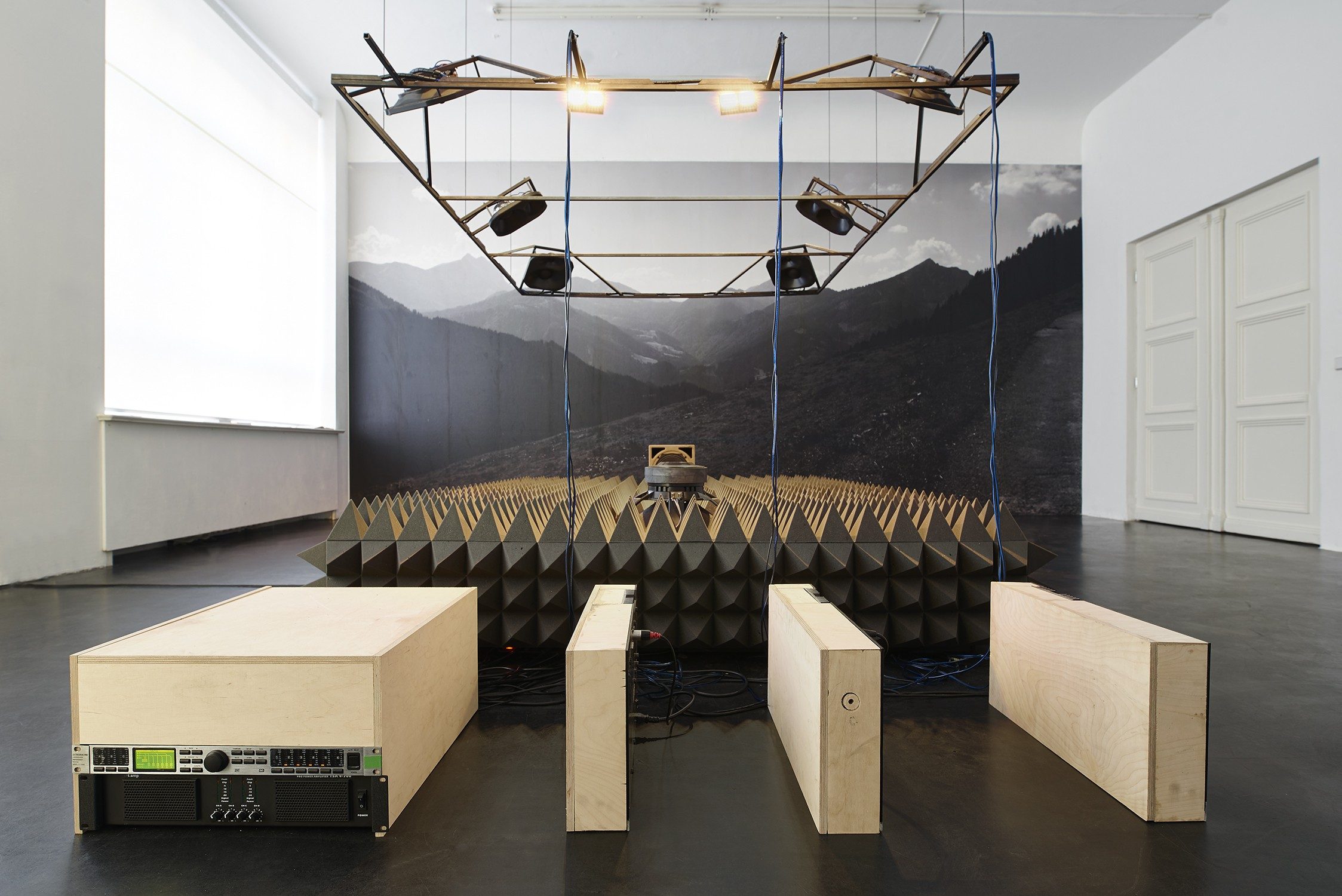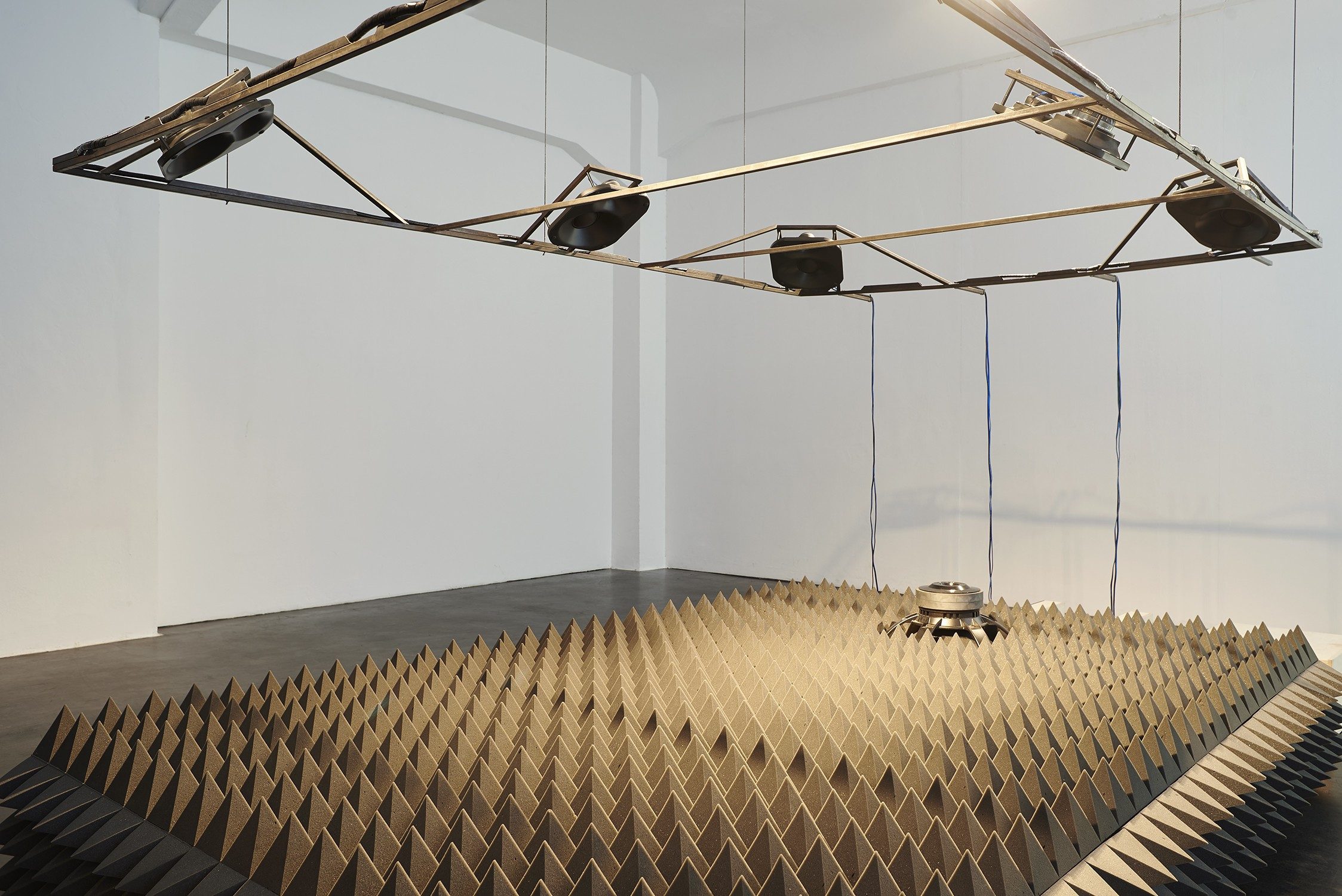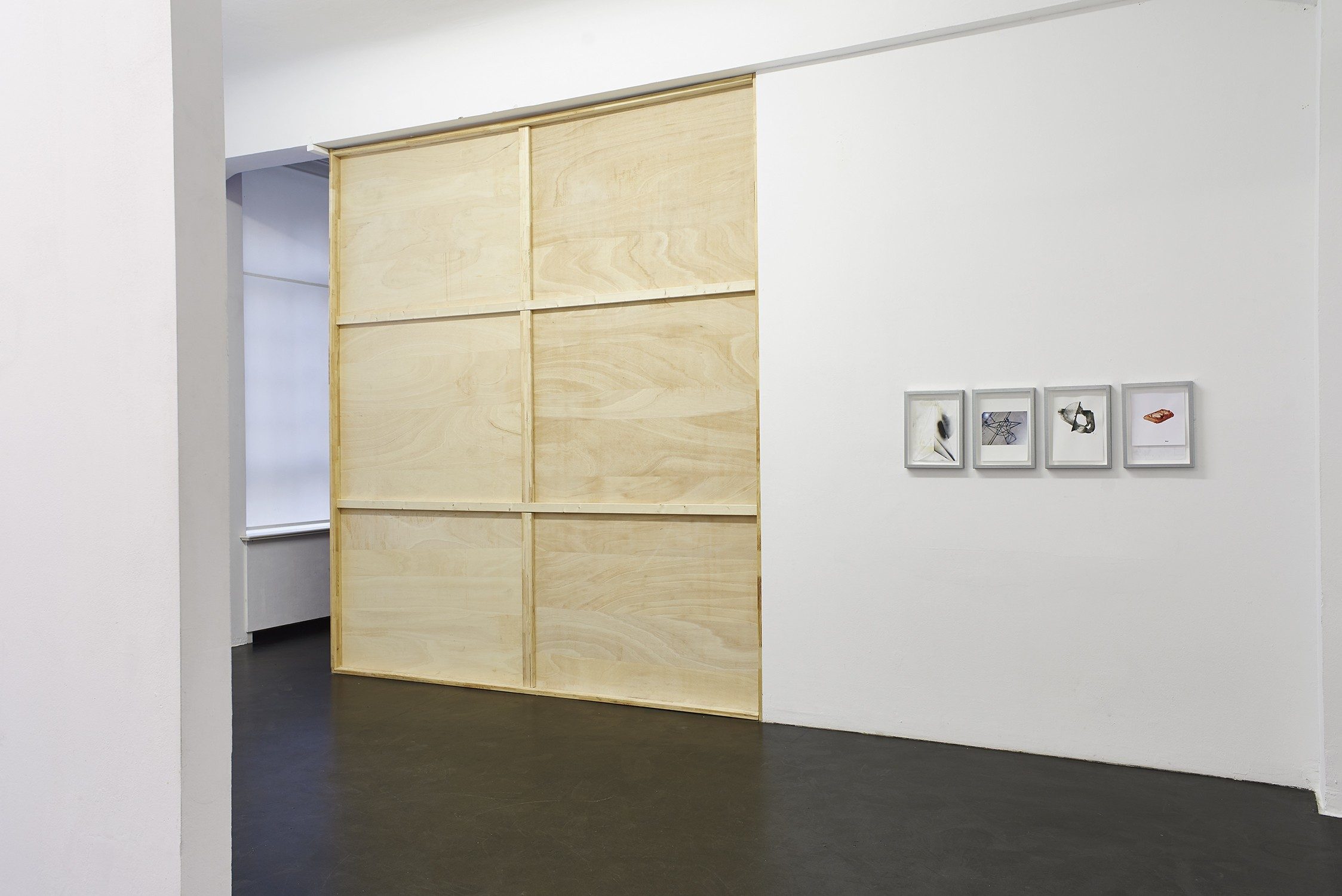






The gallery alexander levy is pleased to present the first solo exhibition of the artist Nik Nowak under the title “Infra / Ultra” at the gallery’s space from June 24 – Jul 29, 2017.
Infra / Ultra
Text by Steve Goodman
We do not yet know what a sonic body can do. Yet, in Nik Nowak’s new installation Infra / Ultra, digital probes are sent out beyond the edges of perception to investigate. To listen to the synthetic jungle of Infra / Ultra, its insectoid chittering and chirping, its searing sirens, its arpeggiated croaking and its dreadful drones, is to be subject to an invasion of audition from its outside, by a swarm of unidentified acousmatic entities.
In 2016, trailing off to the Austrian Alps, Nowak ventured inside the mountains, recording the sounds of 1000-year-old ice dripping, expanding and contracting. He also captured wind turbines, bats, insects, rabbits, maybe rats, a tiger (in the Zoo, not in the Alps), electricity pylons and all kinds of regular household electronics. Because all of these sound sources emit vibrations, in part inaudible to humans, to record this material, Nowak used auditory prosthetics, making manifest our deaf spots. Each enhanced microphone or recording device Nowak deploys, (often customized for tracking bats) upgrade and therefore exceed the human sensorium, making accessible, at least in digitally mediated fashion, the inhuman frequency range strung between 10Hz to 150kHz. While Nowak refers to this recording process as ‘fishing in the dark’, in the final piece it’s more like underwater immersion. Within the installation, the bass is played through a vibrating platform sheathed in acoustic foam on which visitors can recline, with six speakers playing the high/mid tones from a construction above.
With Infra / Ultra, Nowak is approaching the concept of an unsound system. Unsound denotes a sonic frontier zone; a borderline at the fuzzy periphery of auditory perception, where sound is inaudible yet still capable of producing neuro-affects or physiological resonances, modulating both thought and the body. Unsound shadows the bandwidth of human audibility (from 20Hz-20kHz), rendering it as merely a fold on the vibratory continuum of matter. As recent research has illustrated, this narrow fold is much more permeable and mutable than normally assumed. Unsound feeds off the tension between the transensorial and the sonic, between amodality and the channel of audition. It charts the migration of vibrations across borders, between audible and inaudible, between actual and virtual, past and future. So Unsound is a name not just for the inaudible, but crucially the not yet audible, the untapped potential, the immanent futurity of organized vibration, the not yet rendered nexus of rhythms and frequencies within audible bandwidths. As a concept, unsound threads together sonic virtuality, perception and time.
At the peripheries of human audition, infrasound and ultrasound modulate the affective sensorium in ways we still do not fully comprehend. Unsound research, in this sense, therefore stretches in two directions. In the first, hypersonics explores the upper threshold of audibility, or researches the neuroaffects of combinations of ultrasound with audible frequencies, whilst in the second, sub-bass materialism concentrates on the sono-tactile, the haptic and seismological dimension of vibration, its physical and incorporeal power. Rigorously speaking, an unsound system (as opposed to a sound system) is silent, with frequencies both too high and low in pitch to hear. For Infra / Ultra, however, Nowak is not content to voyage towards the deafening silence of the black sun, but wants to bring something back, sonifying and therefore aestheticizing his impossible noises. In post-production, he deletes all the audible content he recorded, while all the unsonic content, the humanly inaudible sounds are rendered audible, pitch shifted and folded in to fill the void of the excluded middle where sound used to be.
Nowak’s prosthetic colonization of the inaudible helps reveal the bionic policing of the sensible and its logistics of imperception. Yet don’t let my emphasis on prosthetics mislead. What appears as technological extensions of the human nervous system probing uncharted auditory waters actually renders the system in reverse. The facade of a scientific consciousness, expanding to encompass the deaf spots on an extended vibratory continuum, is haunted by its more poignant flip side. Instead of inside out, Infra / Ultra testifies to a xenosonic transition from the outside, in – the becoming sensible of seething alien bandwidths.